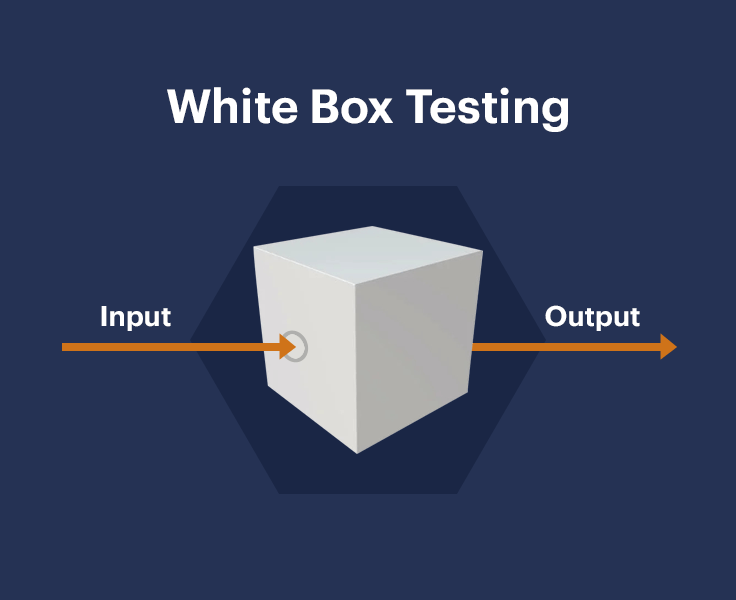The software testing in which the internal structure of the software is tested including the design and codes is known as white box testing. It enhances the design and security while also verifying the input-output flow. The other name of white box testing is clear box testing because unlike black box testing the code is available and visible.
A few of the other names given to white box testing are open box testing, transparent box testing, glass testing, and code-based testing. With the help of white box testing the tester can find whether or not there are any security loopholes, if the codes are perfectly structured, the input flow in the code, checking conditional loops and testing every element individually.
How to do White Box Testing?
The steps of white box testing are:
Identifying what has to be tested
If the identified elements are smaller in number it is better as white box testing endorses testing every component of the selected case. When these are tested all the loopholes present are visible clearly. The testing on the features and components is repeatedly done to ensure that they work in the way they are expected. Small components are taken and tested and when the goal is achieved the next component is taken. It is also important that the testings are energy efficient, that is there is a balance between the amount of energy put to the amount of output obtained.
Plotting on the flowgraph
All possible and thinkable paths are plotted in the flowgraph. These paths can be for any feature, component, or module.It is done to determine the scope of the testing.
Creating test cases for every path
After plotting the possible paths, create test cases for each path. After the test cases are made, they are executed.
Execute
It is the execution phase of testing where the test cases are executed. The execution phases can be repeated for confirmation of the test results.
What are the types of White Box Testing?
The different types of white box testing are:
1. Unit Testing
Unit testing is done to confirm whether a particular code is running or not, to check its functionality. It is usually done in the early steps of the process. Unit testing helps in eliminating simple errors and hence forms one of the basic steps of performance.
2. Static Analysis
Static Analysis is used for evaluating the static parts of the code. If there are any defects or errors, static analysis helps in figuring it out. Therefore the errors are removed in the first steps of the process.
3. Dynamic Analysis
Following static analysis comes dynamic analysis. According to a lot of testers static and dynamic analysis should be performed together. With the help of dynamic analysis, the source code is analyzed and thereafter executed. The output is analyzed, but that does not affect the process.
4. Statement Coverage
One of the most important steps of the testing process is known as statement coverage. The advantages are obtained in the steps of execution. Statement coverage helps in analyzing whether the functionalities are in working order or not. Every function is executed, even if it is for once.
5. Branch Testing Coverage
The software and web applications are not programmed in a continuous pattern. They are branched into different ways so that the process of segregation can be done effectively. Branch coverage helps in finding results fast. The branches are verified like codes. If there are any unnatural elements in the application, it is easily found with the help of this code.
6. Security Testing
Security is one element that has to be perfect at all times. Therefore security testings are done by most of the testers. The application has to be protected automatically hence there has to be a formulated process. Security testing has a lot of substeps. If there is any unauthorized access, the testing helps in rectifying them. If there is any risk of breach the process prevents it.
7. Mutation Testing
Mutation testing is usually the last segment of the process. It is basically a rechecking technique to find bugs and defects that helps in obtaining more information about the strategy to make the system stronger at regular intervals of time.
Advantages and Disadvantages of White Box Testing
Advantages of White Box Testing
- The test cases can be automated with ease.
- The tests can be done without GUI.
- Testing is more efficient.
- Optimization of code can be done as the hidden errors are visible
Disadvantages of White Box Testing
- It is comparatively a more complex process.
- It can be expensive.
- The tests are usually not detailed; hence they can have errors.
- An experienced resource person is required for testing as it requires technical knowledge.
Frequent Asked Questions
What is white box testing?
White box testing is used to test the internal structure of an application, find out if there are any security issues or loopholes, and detect if the paths in the code are broken.
Why do we need white box testing?
We need white box testing because of its robust approach. It can be executed at different levels, such as system level or integration level, or unit level. The working flow of the application is identified with the help of white box testing.
What are the different techniques used in white box testing?
The different techniques used in white box testing are- path testing, data flow testing, control flow testing, coverage, etc.
What are the other names for white box testing?
The other names for white box testing are clear box testing, structure testing, transparent testing, and glass box testing.
Is white box testing a manual or an automated process?
White box testing is used for testing software development and unlike black box testing, it looks at the internal structure and codes. The white box testing can be both manual or automated, depending on the tester.
Which is a better form of testing, automated or manual testing?
Although manual testing has more coverage, automated testing gives better results. It’s is mainly because, with the help of manual testing only a specified number of permutations can be covered. However, with automated testing, a lot many cases can be achieved.
COMMENT
No Comments found.
DETAILED INDUSTRY GUIDES
Software Development - Step by step guide for 2021 and
beyond | OpenXcell
Learn everything about Software Development, its types, methodologies, process outsourcing with our complete guide to software development.
Headless CMS - The complete guide for 2021 | OpenXcell
Learn everything about Headless CMS along with CMS, its types, pros & cons as well as use cases, and real-life examples in a complete guide.
Mobile App Development - Step by step guide for 2021 and beyond | OpenXcell
Building your perfect app requires planning and effort. This guide is a compilation of best mobile app development resources across the web.
DevOps - A complete roadmap for software transformation | OpenXcell
What is DevOps? A combination of cultural philosophy, practices, and tools that integrate and automate between software development and the IT operations team.
GET QUOTE
INSIGHTS INTO TECH
The inception of ChatGPT in 2022 marked the wide-scale adoption of Artificial Intelligence in application development. In the field of creating mobile apps, AI-powered tools and frameworks have become indispensable…
Read more...
Introduction Most industries have turned to AI to stay ahead of the competition in the evolving tech landscape. The construction industry is no stranger to this trend. The advent of…
Read more...
Introduction Digital transformation needs no introduction; it is evolving as a norm in many industries. The paradigm transition it brings to the retail landscape is evident from the latest predictions.…
Read more...








